Brand awareness is notoriously difficult to measure. Because brand awareness strategies are typically top-of-funnel tactics that serve as touchpoints throughout the customer journey, it’s often hard to attribute leads and customers to them specifically.
But just because you can’t always obviously see brand awareness working doesn’t mean it’s not effective. It’s kind of like your robot vacuum. You may not notice it running every time, but you know it’s working when you see how clean your floors are. And instead of sucking up dirt, brand awareness strategies are sucking up new customers for your business.
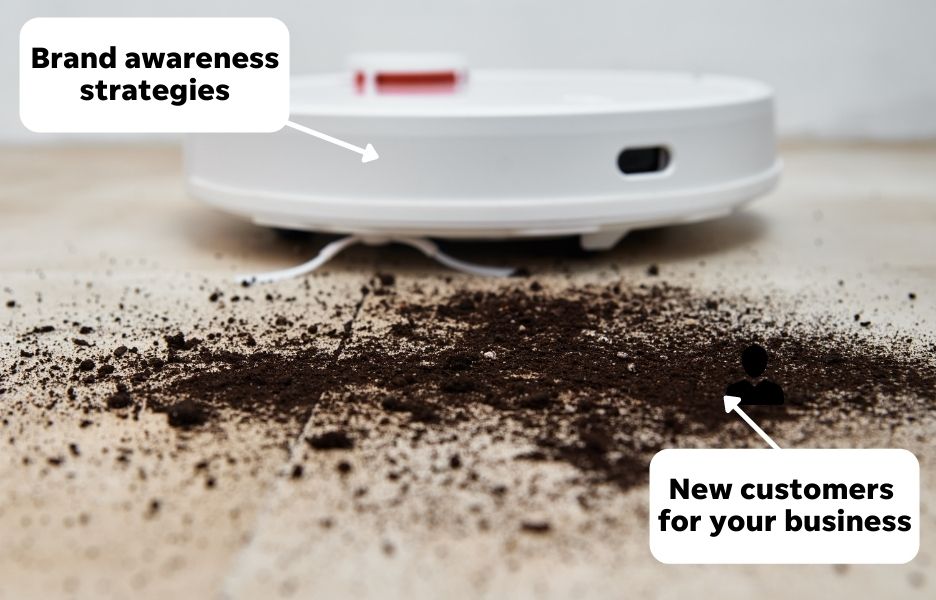
But with any marketing strategy that you’re spending your budget on, it’s not enough to feel like it’s working—you want to know for sure. With cold, hard data.
So in this post, we’ll detail:
- Why you should measure brand awareness
- Exactly how to measure brand awareness
- The brand awareness metrics and KPIs that matter most
Let’s get measuring!
What is brand awareness + why is it important?
Before we dive into how to measure brand awareness, let’s quickly touch on what it is and why it’s so important.
Brand awareness refers to a person’s recognition of a specific business or brand. This means a person is aware your business exists, but they may not yet be a customer.
Brand awareness is important because it helps your business stand out, it compels more people to search for your business, and it can make your other marketing strategies more effective.
Basically, brand awareness strategies help you grease the wheel with potential customers so that when they’re ready to buy, they buy from you.
You can run brand awareness campaigns and invest in brand awareness strategies on a range of marketing channels, including:
- Social media marketing and advertising
- Display advertising and retargeting
- Search advertising
- Email marketing
- Local business listings
- Print advertising
And you can engage in brand awareness strategies that aren’t channel-specific, such as building a brand community, creating a strong brand identity, and crafting an impactful mission for your business.
Basically, any channel that can help you get in front of potential customers and any way that you’re creating a cohesive and memorable brand is an option to build brand awareness.
Why measure brand awareness?
So you know what brand awareness is and why it’s important. But why take the time to measure it? It’s simple. Every marketing goal, brand awareness included, needs a plan, and every plan must be measured to determine:
• Whether it’s working
• How well it’s working, and
• How to fix what’s not working
Brand awareness is important to measure for a variety of reasons—the biggest of which is the fact that the greater your brand awareness, the higher your sales are likely to be.
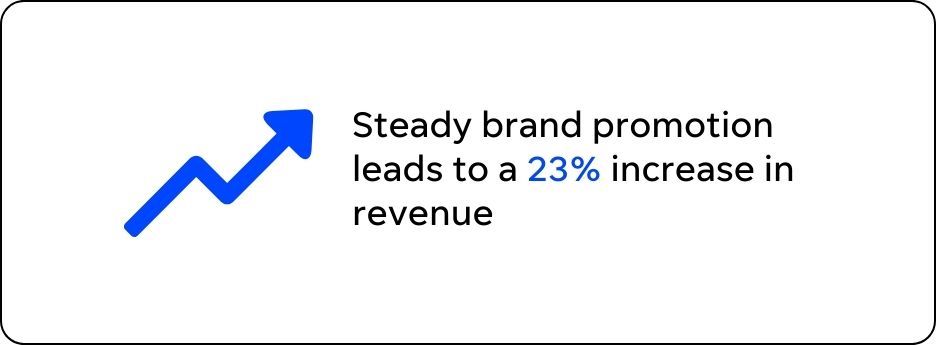
Do people know your name, what you sell, and where your company lives, both online and off? Is there a desirable age group you’ve yet to connect with? Devising ways to gauge how recognizable your business is will not only show you what people think of your business but also where you could be better allocating time and funds to broaden your exposure.
How to measure brand awareness: 11 ways
How you measure brand awareness success largely depends on the marketing channel for your campaign as well as how you currently measure your marketing goals. But here are some general ways to decode your metrics and measure brand awareness.
1. Customer surveys
One way to measure brand awareness is to go right to the source: Your customers. By creating and distributing customer surveys, you can better understand how customers found you online and all the places they recall seeing your business.
Now, this isn’t necessarily the most scientific way to measure brand awareness because there’s a level of human error to factor in. A customer may not consciously remember they first saw your business name in a display ad and attribute finding you from an organic search.
But customer surveys will still give you an idea of what stood out to customers and where may have had the most impact.
You can distribute these surveys in a couple of different ways. One is by creating a multi-question survey with the purpose of gathering data beyond measuring brand awareness, such as a customer feedback survey, that you can also include a question about where customers saw your business online or offline.
You can also include a question or two for new customers to answer during onboarding (this works best for healthcare or home services businesses) that asks them how they found your business and to check all the places they remember seeing your business on or offline.
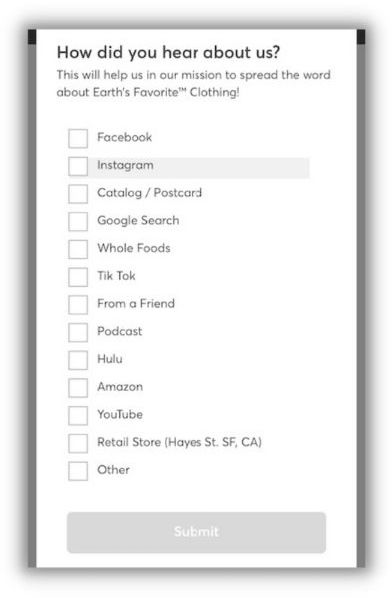
Customer surveys shouldn’t be the only source of truth when it comes to measuring brand awareness, but they can still provide valuable information you can use to inform your brand awareness strategy.
2. Lift in ad clicks (and conversions)
Ad clicks on brand awareness campaigns like display ads and retargeting ads are an obvious way to measure success. But you can also measure ad clicks for your other strategies like local PPC and Facebook advertising to see if there’s a notable lift after starting your brand awareness campaigns.
Why you might ask? One study found that 82% of people clicked on a result from a brand they were familiar with. So this means a person could have seen your display ad or noticed your business’s print ad and taken no action, but because they had that awareness of your business, it may have prompted them to click on your PPC ad or Facebook ad.
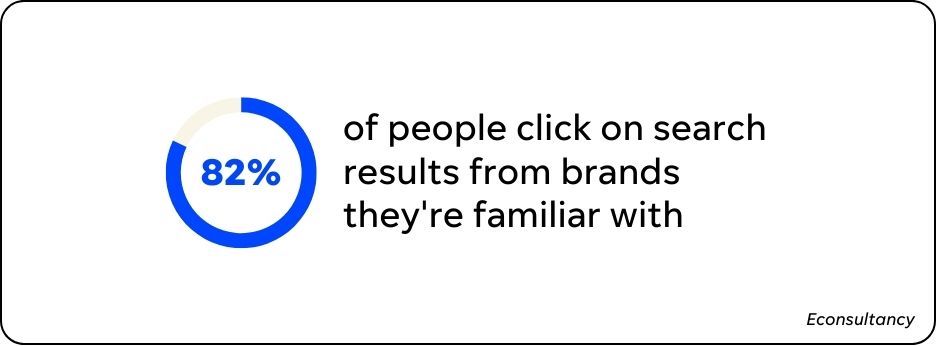
You can also measure a lift in ad conversions. Brand awareness strategies work well with your other marketing to increase the amount of time your business appears throughout the buyer’s journey, which can result in more conversions or higher conversion rates for your campaigns.
3. Branded search volume
When running brand awareness strategies like display ads or branded content, you may see a high volume of clicks without many conversions. This is because these strategies are typically top of funnel, meaning they’re some of the first ways people learn about your business.
Keep in mind people need to see information about a business seven to 10 times before taking an action. So a click on your ad, or even an impression, may result in a separate search later.
In fact, one study found that nearly 30% of consumers conduct a search for a business after seeing its display ad.
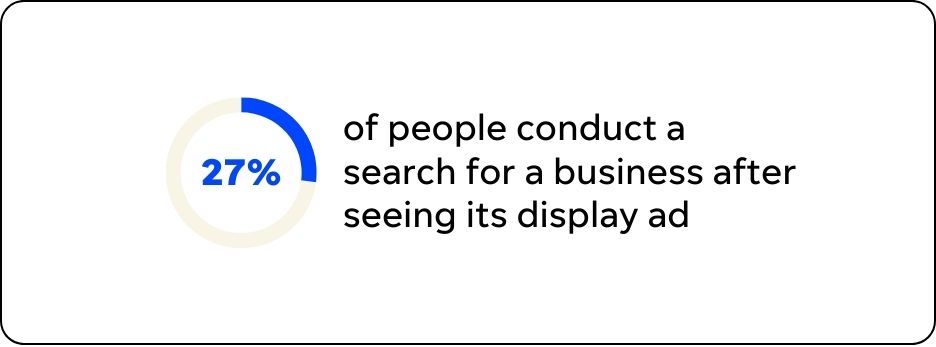
This is why looking at the amount of branded searches, which are searches for your business name, is a crucial brand awareness metric that can give you an idea of whether or not your strategy is working.
You can find this information using a keyword research tool or through Google Analytics (tips do that here!).
If you see searches for your business name increasing or more people coming to your website from a branded search, you can assume that’s because they’ve seen information about your business somewhere else and are either looking for more information or are ready to make a purchase.
4. Overall website traffic
Similarly, an increase in website traffic can signal an effective brand awareness strategy. This is because more people may be searching for your business or visiting your site from your various brand awareness strategies.
Plus, as we mentioned, the majority of people click results from brands they’re familiar with, so you could be getting more website traffic because people are clicking on your search results over the competition they’re unfamiliar with.
To truly understand what’s driving website traffic, though, you can dig into the various sources. We’ll cover a couple of important ones now.
5. Direct website traffic
Direct website traffic is the amount of website traffic you’re getting from people going directly to your URL. This is one of the brand awareness metrics you’ll want to look at as you dive into your overall site traffic.
People could be going directly to your website in a couple of different ways:
- They could see your site URL somewhere (say a print ad, your social media profile) and type it into their URL directly.
- They could have previously visited your website and now the site URL auto-fills in their browser.
Both of these ways indicate someone found your business based on a brand awareness strategy.
You can see direct website traffic in Google Analytics:
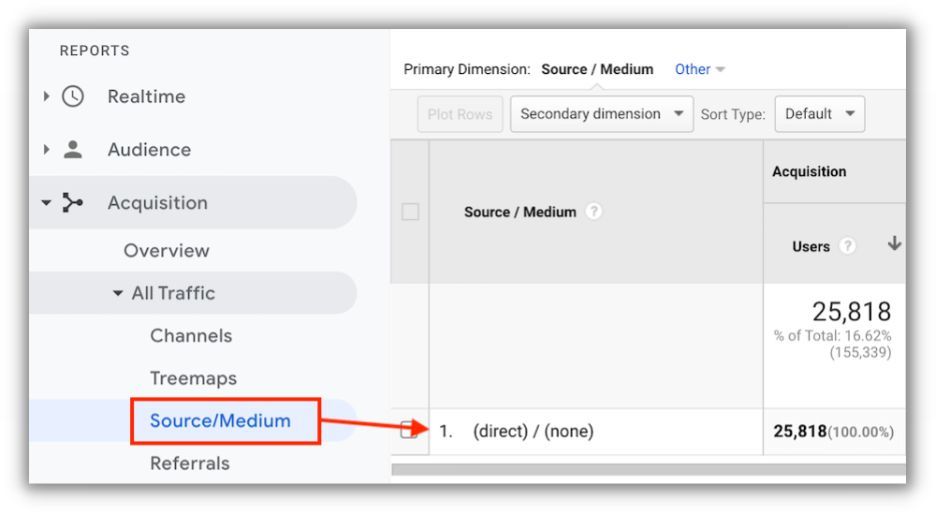
6. Referral traffic + backlinks
You can build brand awareness with more than customers. You can also build awareness with other businesses, local publications, and industry publications. These businesses and publications may then link back to your website (especially if you have a strong content marketing strategy), which can then result in backlinks and referral traffic.
You can see referral traffic in Google Analytics to identify if there are any websites that are sending visitors to your site. This may mean you published an exceptionally helpful blog post or FAQ page or that they’re sharing information about your business with their audience.
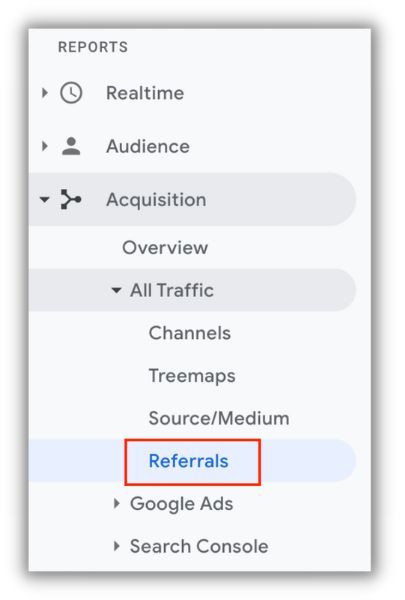
Referral traffic and quality backlinks can also boost your SEO, so these are two areas you should definitely focus on for both brand awareness and search visibility.
7. Website conversions
Getting website traffic is great, but you also want that website traffic to convert into leads and customers. Brand awareness strategies can help you convert customers at a higher rate—for instance, one study found there was a 59% lift in conversions when users conducted a search related to a display ad.
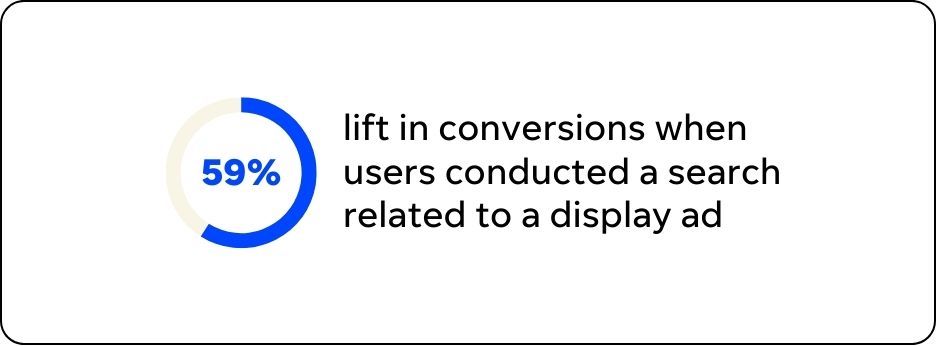
You can track and calculate your website conversion rate by dividing the number of conversions you’ve received from your website by the number of website visitors.
If you notice you’re getting a lot of website visitors but few conversions, it could signal that you need to adjust your brand awareness strategy to more closely match your website content or searchers’ intent—meaning why they’re searching for something.
For example, if your business primarily offers emergency plumbing services but your display ads are highlighting water heater services, you may have mismatched intent, which would result in fewer website conversions.
By analyzing this brand awareness metric, you can identify areas that can be improved or tweaked for better performance and alignment.
Find more important conversion metrics to track here.
8. Social media engagement
Another way to measure brand awareness is to look at how people are engaging with your business on social media. Are you publishing updates to an empty audience? If so, people may not be very aware of your business on social media—or at all.
While social media popularity isn’t the tell-tale sign of brand awareness, it is a good indicator as many people engage with and search for small businesses across social platforms. For example, 200 million Instagram users visit at least one business profile every day.
If you notice social media engagement is on the rise or you’re getting more followers across platforms, it may be a sign your brand awareness strategy is working.

Related: Find out more social media metrics you should be tracking.
9. Social mentions
Another way you can measure brand awareness on social media is by looking at your social mentions or engaging in social listening. Social listening is when you track people tagging your business and mentioning your business without tagging you (it usually requires some kind of software, but you can also do it for free using tools like Hootsuite).
We know that 80% of people on Twitter have mentioned a business or brand in a tweet, and people also actively tag businesses on Instagram and Facebook.
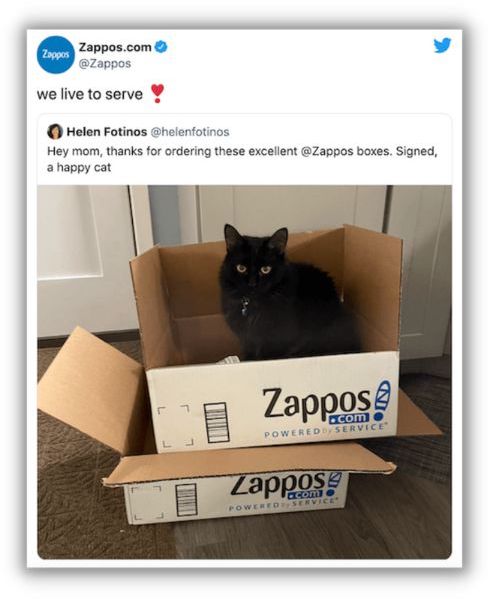
It’s also great to respond when someone tags your business, like in this tweet!
People tagging and talking about your business not only shows a high level of brand awareness, but it can also contribute to more brand awareness, so it’s a win-win!
10. Marketing attribution reports
One of the best ways to measure brand awareness is through marketing attribution reports. Attribution reporting shows how a customer engaged with your business throughout the funnel, from discovery to purchase. It can also show where a lead may have dropped off in the sales funnel so you can potentially re-engage them and get them to convert.
For example, a marketing attribution report could show you that a contact initially engaged with your business on Facebook, then clicked on a display ad, and then searched for your business and filled out a form from your search ad. While your search ad would get the “credit” for that lead, you wouldn’t see the other touchpoints that customer went through before contacting you. (This is also called an assisted conversion.)
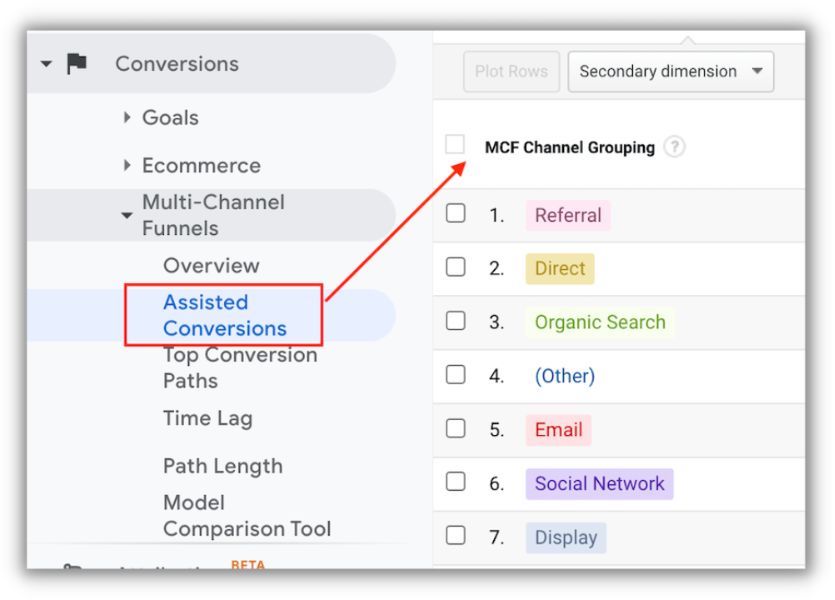
One of the cons of attribution reports, however, is it only shows you what a contact engaged with. So they could have first engaged with your business on Facebook, but they may have first seen your business on a directory listing site or in a direct mailer.
Still, attribution reporting gives a good idea of all the ways your marketing is reaching your audience. It’s also a more advanced level of reporting that typically requires a tool or specific system, although you can accomplish many aspects of it with Google Analytics. (A good CRM may provide what you need as well!)
11. More customers
When it comes down to it, you’re running any marketing strategy to get more customers. So if you start to notice an increase in new customers, higher retention, or increased revenue, it’s a pretty good sign your brand awareness strategy is doing what it’s supposed to be doing.
Be aware of the ways to measure brand awareness
When measuring brand awareness, it’s important to keep in mind that success looks different than measuring lead-driving campaigns. You may not see a direct correlation between your brand awareness strategy and conversions, but that doesn’t mean it’s not contributing to the overall success of your marketing.
By paying attention to the right brand awareness metrics and understanding the way your brand awareness strategies move customers through their journeys, you can get a better understanding of how all your marketing is working together for success.
Here are the top ways to measure brand awareness:
- Customer surveys
- Lift in ad clicks (and conversions)
- Branded search volume
- Overall website traffic
- Direct website traffic
- Referral traffic + backlinks
- Website conversions
- Social media engagement
- Social mentions
- Marketing attribution reports
- More customers
Related Articles
-

Impressions vs. Clicks: What's the Difference?
-

Facebook Advertising Benchmarks for 2024 (+Quick Tips to Improve Results!)
-

What Happens in an Internet Minute: 90+ Fascinating Online Stats [Updated for 2024!]
-

The 9 Most Important Conversion Metrics to Track for Digital Marketing Success
-

How to Collect & Use Customer Data the Right (& Ethical) Way in 2024

